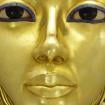
Think Egypt Think Magic: Essence of Spells, Incantations, Amulets and Absolute Faith – Part II
Popular stories from different eras of ancient Egyptian history reveal staggering and incredible tales of magical feats that were performed by lector priests, sorcerers and even kings. How much of this was true? Did the masses blindly follow practices involving magic, or was this unshakeable faith, based on concrete results, that constituted their core belief?

Coptic codex with magic spells – fifth to sixth century AD. Museo Archeologico, Milan. (CC BY-SA 3.0)
Writhing Snakes and Ravenous Cows
Lector priests were highly-trained in understanding the content in the wealth of documents present in the House of Life. Also, their standing as interpreters of dreams was probably based on the review of ‘ Dream Books’. There are tales galore, that encompass royalty and commoners alike; and they recount incredible instances of the workings of magic in ancient Egypt. A prime source is The Westcar Papyrus dated to the Second Intermediate Period (circa 1782 - 1570 BC), but probably penned during the Middle Kingdom (2040 - 1782 BC). This document contains five stories about extraordinary tricks performed by magicians and priests.

This set of canopic jars from Abydos contained the internal organs removed from the body during mummification. The four sons of Horus represented on the lids were believed to protect these organs. (Walters Art Museum)
In the first story, the sons of Pharaoh Khufu compete to entertain the ruler with accounts of the magical deeds of famous lector priests; notably Imhotep and Prince Hardjedef, years after their demise. The second tale told by Pharaoh Khafre is about a furious chief lector priest, husband to an unfaithful wife. He transformed a wax crocodile into a real one and used it to destroy the paramour. The third, recited by Bauefre, Khufu’s son, involves chief lector priest Djadjaemankh and Pharaoh Sneferu; in which the magician parted the waters of a pleasure lake to recover the pendant dropped by a concubine - millennia before Moses parted the Red Sea!
The fourth story narrates the encounter of Khufu with a magician named Djedi, whose skill it was to rejoin decapitated heads. “Let a captive who is shut up in prison be brought to me so that I may inflict his doom upon him,” the king ordered. But Djedi persuaded Khufu saying he would rather perform the act: “upon some creature that belongeth to the sacred animals.”
Like this Preview and want to read on? You can! JOIN US THERE ( with easy, instant access ) and see what you’re missing!! All Premium articles are available in full, with immediate access.
For the price of a cup of coffee, you get this and all the other great benefits at Ancient Origins Premium. And - each time you support AO Premium, you support independent thought and writing.
Independent researcher and playwright Anand Balaji, is an Ancient Origins guest writer and author of Sands of Amarna: End of Akhenaten
The author expresses his gratitude to Marcel Maessen, t3.wy Projects for granting permission to use exclusive photographs of rare Tutankhamun-era artifacts.
[The author thanks Margaret Patterson for granting permission to use photographs.]
Top Image: Magic Wand of hippopotamus ivory (Middle Kingdom-Second Intermediate) depicting a procession of deities. The curve of this wand follows that of the hippopotamus tusk from which it was made, but its flat form is reminiscent of the curved throwing sticks used to catch fowl. Powerful protective deities, such as Taweret and Bes, are depicted together with protective uraeus serpents and other mythical creatures. Many of the figures brandish knives to dispel evil spirits. Walters Art Museum.
By Anand Balaji















